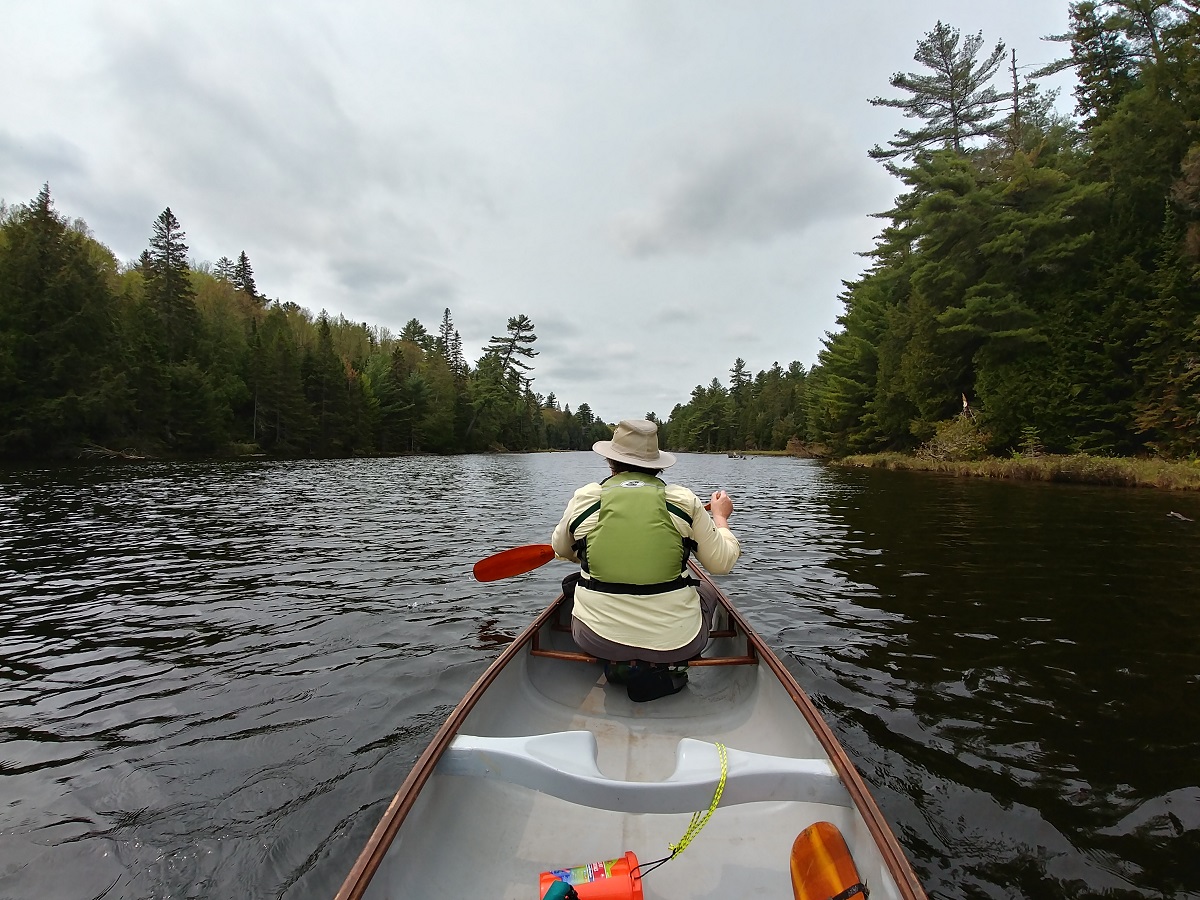Today’s post comes from David LeGros, a park naturalist with the Ontario Parks Discovery Program.
“I’ve never seen one of those” is among my favorite sentences.
There’s a scary thing that happens the longer you look into nature. The more you find, the more you find out that you don’t know that much. It can be an intimidating feeling, but also, an exciting feeling.
Your mind is about to be blown.
Repeatedly.
Imagine paddling across a beautiful lake, taking in the scenery, listening to the birds, and watching the clouds blow over. Sounds great, right?

Imagine if you could paddle that lake your whole life and never see the whole thing. That’s nature for the curious person – you will never see the whole thing, but the ride is incredible!
Ontario is home to amazing landscapes and biodiversity. You’ll never run out of things to learn or places to explore.
Discover the Discovery Program
Everyone has a different set of experiences and knowledge about nature.
Lucky for us, Ontario Parks’ Discovery Program has a team of dedicated and curious park naturalists across the province that love solving your wildlife-sighting mysteries.
I spend most of my time in Algonquin. It’s an amazing place for wildlife watching, whether from a canoe or a camp chair.

People come into the Visitor Centre with all sorts of sightings – grainy pictures, videos, vague descriptions, funny imitations of bird calls, and occasionally bugs in jars (my personal favorite).
Visitors want to know what they saw, or how it lives.
I usually deliver programs about the park in a way I think people will like, however the random questions are where I learn what people really want to know about. That’s how I find Algonquin’s “most asked-about species.”
A camper question often happens like this: “Ring, ring, ring. Good afternoon, David speaking…oh I see, sounds mysterious. I will be right up.”
I then meet the visitors and we try to figure out what they saw. Sometimes it’s easy, sometimes hard, and sometimes inconclusive.

This is fun for me: getting to figure out what someone saw and make sense of it for them. That’s the normal scenario in the winter months. In the summer, it’s different.
Collaboration or competition?
In the summer, I get to work with a coterie of extremely talented, passionate, and knowledgeable naturalists. They are also really competitive.

When the front desk pages the entire office with “a naturalist to the front desk, please,” I always look down the hallway.
As soon as the page ends, two or three naturalists race to answer the question. I’m told they might even push each other out of the way. So proud.
We get all sorts of questions, and some of them might make us laugh. But we love the motivation: you want to know more about the park and what lives here!
You never know who you’ll meet or how the interaction will change their perspective of the landscape, or even the trajectory of their lives! We even have “regulars” that often come in several times over the course of their trip to ask us more questions.
#AskanOPnaturalist
Perhaps you aren’t coming into our Visitor Centres to ask your questions. (You should, because we have interesting exhibits and knowledgeable people!)
But if you don’t, we can still help!
If you snapped a picture of the curiosity, share it with us! Reach out to us on social media, using the hashtag #AskanOPnaturalist, and our Ontario Parks naturalists will help identify your observation!

Naturalists love a challenge, but there are a few things that can help us make the identification easier:
- try to take the best picture possible, and/or send multiple angles
- let us know the park/region and habitat where you found it
- tell us the date or season. Many species have specific ranges and times of year when they are active
- a description of the behaviour can be helpful
- if you’re photographing something small, from a bug to a footprint, try to add in something to give us a sense of scale (a coin or your hand can work very well for this)
These are all clues.
We always appreciate learning more about our parks, but if you find something while you’re at home or somewhere else, reach out anyway!
Ontario’s protected places are really important, but so is the rest of the province. It could be an important observation of a species-at-risk, or an early detection of an invasive species.
You’re always welcome to #AskanOPnaturalist!
Get into community science
The world may sometimes seem like a small place, but it is really enormous once you start having a look.
Our park staff aren’t always able to get to every corner of our parks, but you might and your observation could be the key to unlocking some mystery.
Perhaps you’re a bit more advanced in your nature observation skills. Consider putting your observations on iNaturalist too! It’s a great way to identify and catalogue the diversity of life on Earth, and each of our Ontario Parks has a special project within this platform to collect this information.
